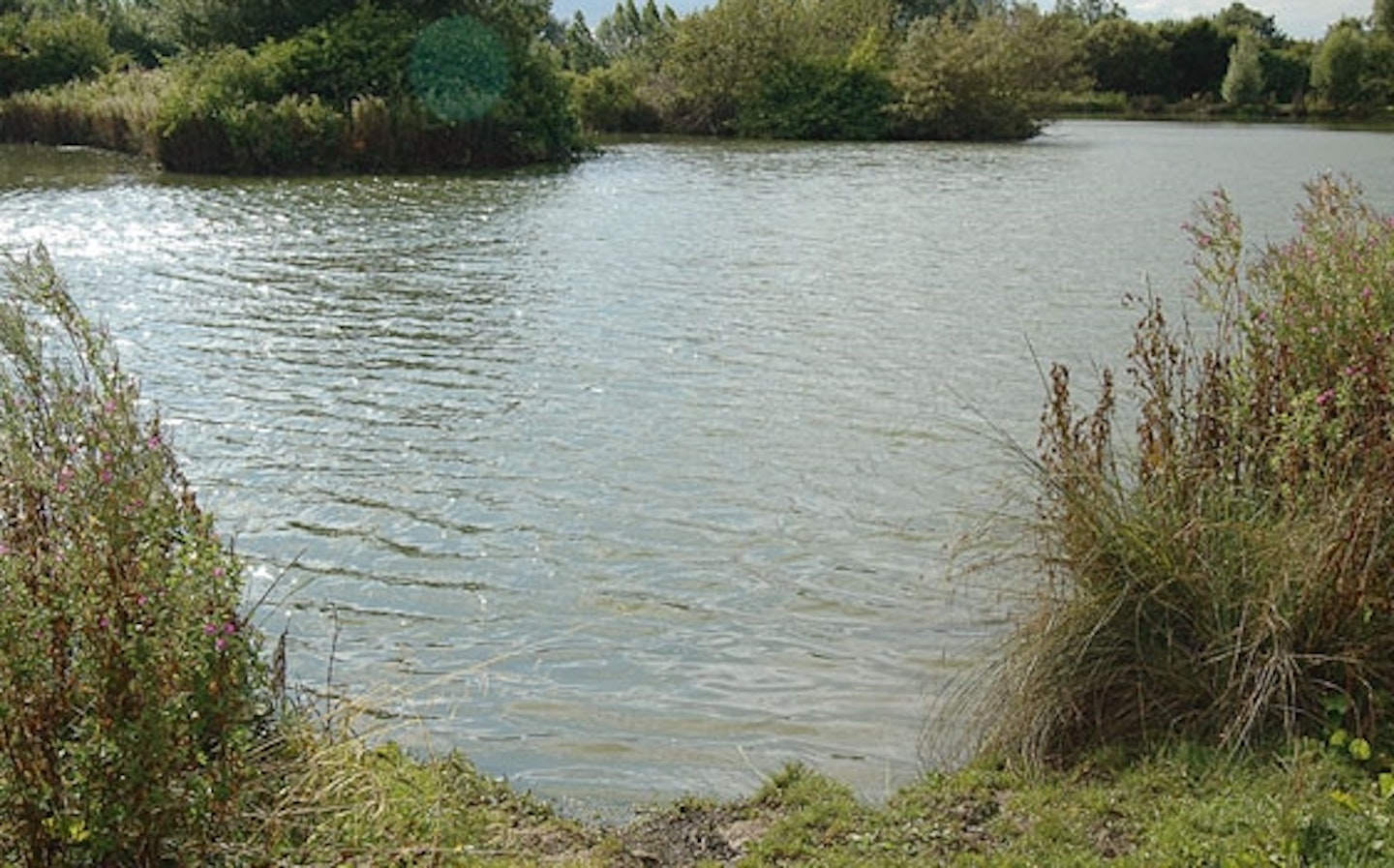Look for features
From the bank, waters might look identical but there are underwater features on all venues that make them attractive to fish in cold weather. Find these features and you’re half way to catching.
Islands
In summer, fishing to an island can be an absolute winner. In winter, they can be a mixed blessing.
The shallow margin areas probably won’t fish in the morning, especially after an overnight frost which will make the water very cold. So, target the deeper areas at the bottom of the island slope.
If the sun shines strongly, the shallow island margins may heat up slightly and be worth a look by mid-afternoon.

Overhanging trees
Try not to fish under overhanging trees. The water in the shadow of trees won’t have a chance to warm up with any sun (and nor will you!). You’re also more likely to have piles of decaying leaves and fallen branches laying on the bottom of the swim making bait presentation difficult.
Wind direction
If north or easterly winds are blowing, make sure they’re off your back – not gusting in your face. High banks are always good to shelter behind. Southerly or westerly winds will be warmer and more productive.
Decaying reed beds
Don’t fish too tightly to reed beds in winter. There will be a lot of decaying reed stems sticking up out of sight below the surface to interfere with your presentation.
Short period fishing
On cold mornings have an extra hour in bed and start fishing a little later than you normally would. On many waters, the fish won’t even think about feeding until the water has been warmed up a little by the sun.
Springs
Any spring-fed fishery is well worth fishing in winter because groundwater has a constant temperature. Find out where the spring enters and fish as close to it as possible.
Shallow bays
Shallow bays that are sheltered from the wind and receive plenty of sunshine are natural areas to attract fish in winter. The shallow water will warm up quickly in the sun and attract fish like a magnet. If you can get a bait into areas like this, your chances of catching in the cold will skyrocket.
History
Historically, fish tend to congregate in the same areas in winter. Some specimen carp regularly come out from the same swims at the same time of year. Match winning weights come from the same handful of pegs on the commercials.
Failing all else, ask the fishery owner or bailiff which pegs usually produce in the cold. There will always be a few ‘bankers.’
Thermoclimes
You'll often read that the deepest parts of a fishery are the ones to fish in winter because they’re slightly warmer.
On some venues, depending on depth, this can be completely wrong so don’t make the mistake of automatically setting up to fish on the bottom and staying at that depth for the full session if you’re not getting bites.
In winter, the two biggest influences on water temperature are wind and sun. These elements combine to create a phenomenon called stratification – layers of slightly different temperature water sitting on top of each other.
These layers – or thermoclimes – are created because the density of water alters with temperature. Thermoclimes are most marked in waters with depths of 20ft or more, and are far less obvious in shallow, man-made commercial waters.
If you are fishing deep water venues like gravel pits, reservoirs and some lakes you’ll often find that the fish often congregate in the slightly warmer layers – which could be anywhere from a foot off the bottom, to a foot off the top.
As a general guide, at zeroºCwater is at its lightest in the form of floating ice. Below the ice will be a layer 15cm -20cm deep at round 1ºC-2ºC. At 4ºCwater is at its densest, so it sinks to the bottom.
Underwater currents caused by wind and wave action can mix up, or push these layers up and down in the water column, making them less distinct, but there will still be subtle temperature differences – and this is where you’ll find the fish.
One of the best ways to locate exactly where the fish are in the water table is to use a zig rig (pictured left).
By using a buoyant bait you can search the whole of the water table until you locate the depth where the fish are swimming.
Commercial pools
Many man-made commercial pools have depths of 5ft-6ft and, in the coldest conditions, the deepest water can sometimes act as a fish-holding feature (though not always!)
The easiest way of locating these deeper areas, if you don’t know the venue is to tie a 1oz bomb on to the end of your line, cast in and count down.
The weight will fall through the water at approximately one foot per second. Start counting when the bomb hits the water and stop when you feel it hit the bottom. Counting to five means it’s roughly five feet deep. If you can identify any areas that are slightly deeper than the norm, it’s worth targeting them in very cold weather.
Alternatively, if you’re fishing the float on rod or pole, don’t start off with a bulk of shot to bomb your hookbait to the bottom. Choose a rig with only a couple of tiny No 8 or No 10 dropper shot and a lightweight hookbait such as a maggot and allow it to fall slowly through the water column. If you start getting bites on the drop, shallow up your rig until you find the depth at which fish are feeding.
.jpg?ar=16%3A9&fit=crop&crop=top&auto=format&w=1440&q=80)